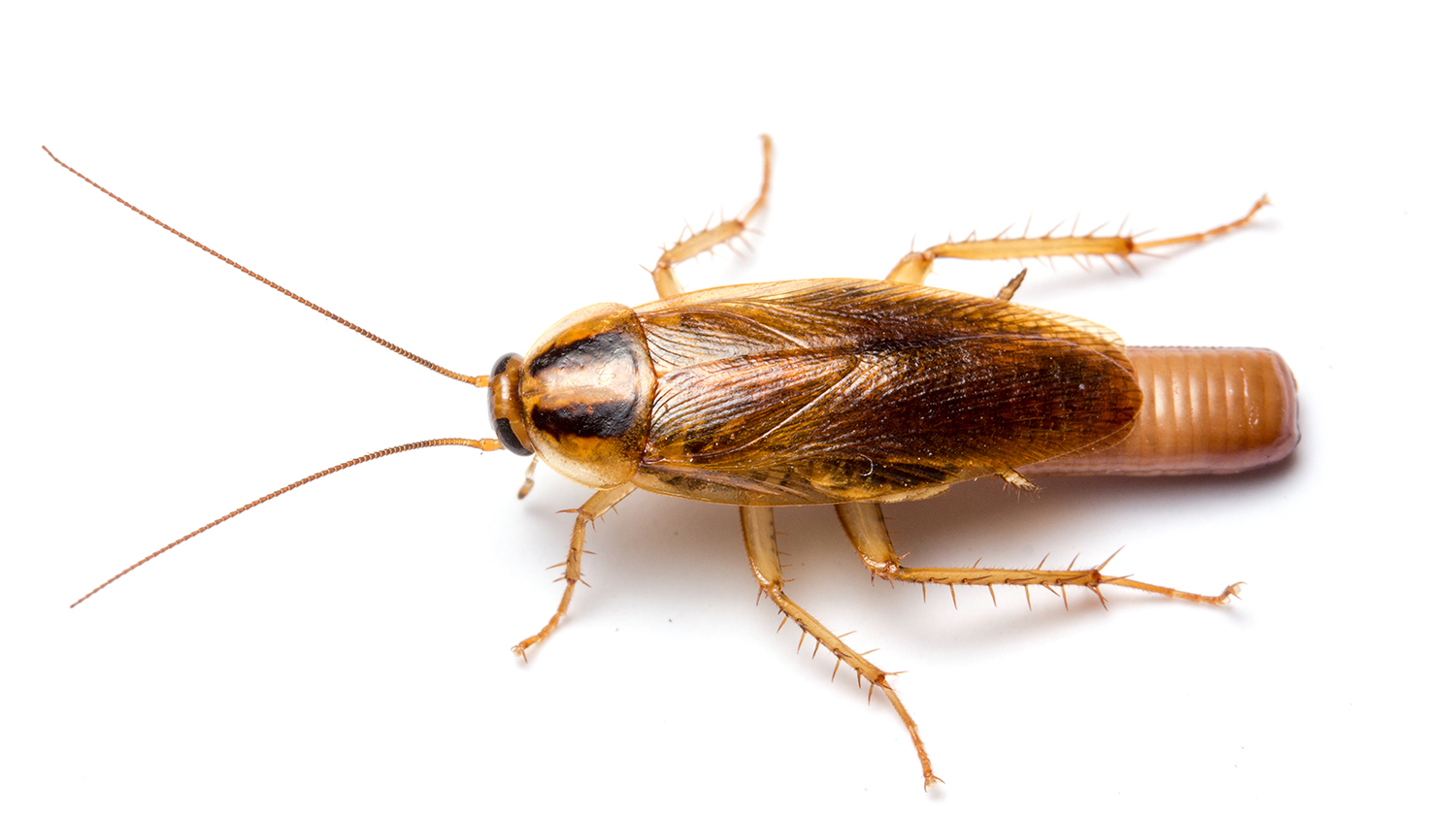‘Bug Bombs’ Are Ineffective Killing Roaches Indoors

For Immediate Release
Total release foggers, commonly known as “bug bombs,” are ineffective at removing cockroaches from indoor environments, according to a new study from North Carolina State University.
Bug-bomb chemicals fail to reach places where cockroaches congregate the most – on the underside of surfaces and inside cabinets, NC State researchers say. Besides leaving behind numerous cockroaches, bug bombs also leave behind nasty toxic residue in the middle of floors and countertops, areas cockroaches generally avoid but which are heavily used by humans and pets.
“There’s been a general assumption that bug bombs work to eliminate cockroaches indoors, but no one had conducted a formal assessment of their efficacy and any exposure risks,” said Zachary DeVries, an NC State postdoctoral researcher and the lead author of the study, published in BMC Public Health. “We’ve done that simultaneously in this study.”
To understand more about the effectiveness of total release foggers, the researchers tested four different commercially available bug bombs with various insecticide active ingredients in five different apartment complexes with moderate to severe infestations of German cockroaches (Blattella germanica), common indoor household pests.
“All the fogger products contained pyrethroids, a class of fast-acting insecticides, and some contained piperonyl butoxide, a chemical that prevents roaches from metabolizing, or breaking down, the insecticide,” said Coby Schal, Blanton J. Whitmire Distinguished Professor of Entomology at NC State and senior author of the paper.
After gauging estimates of cockroach populations in 20 homes, the researchers set off the bug bombs, following the labels’ instructions – and U.S. Environmental Protection Agency guidelines on preparing the homes for fogger release – to the letter.
The researchers then monitored cockroach populations two weeks and one month after the bombs were released and found no declines from the pre-intervention estimates.
“The bug-bomb products did absolutely nothing to control cockroach populations in these homes,” DeVries said.
Meanwhile, the researchers treated 10 additional homes with either a commercially available gel bait or a professional-grade gel bait. Gel baits are generally applied in small dabs via syringe, so they can be placed directly in the places where cockroaches hide. In contrast to the bug bombs, these baits were effective, after two and four weeks, in eliminating cockroach populations in the 10 homes.
To further test the effectiveness of bug bombs, the researchers placed both roaches raised in the lab and roaches captured in the homes into greased cages – making them inescapable – and set the cages on the floor and in upper cabinets of the studied homes during the deployment of the bug bombs.
“The lab roaches, which are not hardy, had high mortality, as expected,” DeVries said. “The roaches captured in the homes and then brought back, however, had far lower mortality rates than you would expect from direct exposure to bug bombs, confirming the ineffectiveness of these products when used for German cockroach control.”
The researchers also examined whether bug bombs increased insecticide exposure risks in the homes. Prior to doing that, however, they swabbed floors and kitchen surfaces and found insecticide residue already present.
“Baseline levels of insecticides in these homes makes sense, because residents with moderate to severe cockroach infestations are likely to use insecticides to attempt to eliminate roaches,” DeVries said. “However, what was most disconcerting was that these swabs were collected from the middle of floors and kitchen surfaces, locations where roaches don’t generally congregate.”
Four to six hours after the bug bombs were deployed, the researchers again swabbed floors, kitchen surfaces, walls and cabinets and found average insecticide residues increased 600 times baseline levels on all horizontal surfaces.
One month later, those surfaces were swabbed again; 34 percent still had higher insecticide residue levels than the baseline.
“Bug bombs are not killing cockroaches; they’re putting pesticides in places where the cockroaches aren’t; they’re not putting pesticides in places where cockroaches are and they’re increasing pesticide levels in the home,” DeVries said. “In a cost-benefit analysis, you’re getting all costs and no benefits.”
“This is of particular concern in low-income communities, where bug bombs are frequently used because professional pest control may be too expensive,” Schal added.
Study co-authors include NC State research technician Richard Santangelo, former NC State graduate student Jonathan Crissman and lab assistant Russell Mick.
Funding for the work came from the U.S. Department of Housing and Urban Development Healthy Homes program (grant NCHHU0017-11), the U.S. Environmental Protection Agency Pesticide Environmental Stewardship Program (grant PE-95450709), the National Institute of Environmental Health Sciences (Center for Human Health and the Environment, P30ES025128), and NC State’s Blanton J. Whitmire endowment.
– kulikowski –
Note to editors: An abstract of the paper follows.
“Exposure risks and ineffectiveness of total release foggers (TRFs) used for cockroach control in residential settings”
Authors: Zachary DeVries, Richard Santangelo, Jonathan Crissman, Russell Mick and Coby Schal, North Carolina State University
Published: Online Jan. 27, 2019, in BMC Public Health
DOI: 10.1186/s12889-018-6371-z
Abstract:
Background: The German cockroach, Blattella germanica, is one of the most challenging pests to eradicate from indoor environments. Professional pest control is often prohibitively expensive, prompting low-income residents to turn to over-the-counter consumer products, including total release foggers (TRF, “bug bombs”). Despite their widespread use, little is known regarding either the associated pesticide exposure risks or the efficacy of TRFs.
Methods: Cockroach-infested homes were recruited into the study. Wipe samples were collected from various surfaces before TRFs were discharged, immediately after, and one month later to determine pesticide exposure risks in 20 homes (divided equally among four different TRF products). Simultaneously, cockroach populations were monitored in all homes to assess the efficacy of TRFs. In parallel, 10 homes were treated with gel baits (divided equally between two bait products), to compare TRFs to a more targeted, low-risk, do-it-yourself intervention strategy.
Results: TRFs failed to reduce cockroach populations, whereas similarly priced gel baits caused significant declines in the cockroach populations. Use of TRFs resulted in significant pesticide deposits throughout the kitchen. Across all products, pesticides, and horizontal kitchen surfaces, pesticide residues following TRF discharge were 603-times (SEM ±184) higher than baseline, with a median increase of 85 times.
Conclusions: The high risks of pesticide exposure associated with TRFs combined with their ineffectiveness in controlling German cockroach infestations call into question their utility in the marketplace, especially because similarly priced and much safer bait products are highly effective in the indoor environment.
- Categories:


